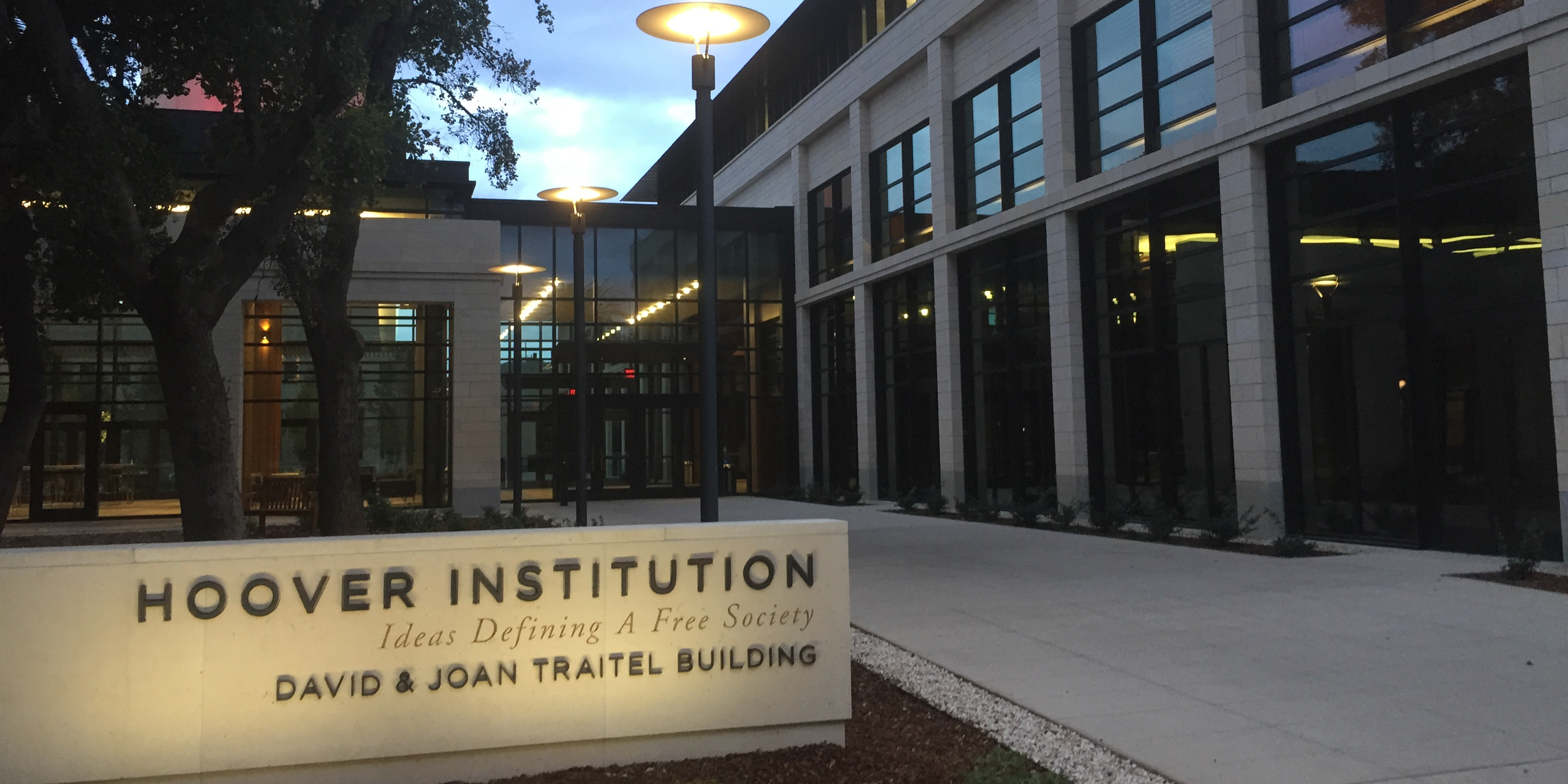Hoover Institution Director Condoleezza Rice announced the forthcoming publication of The Stanford Emerging Technology Review at the Tech Track II symposium reception on Wednesday. In collaboration with School of Engineering Dean Jennifer Widom, the Hoover Institution aims to make information on technology breakthroughs continuously accessible to policymakers.
“We think there needs to be some translation, shall I say, between the Silicon Valley and the rapidity of change that we are seeing here and in other centers of technological excellence in the United States and how Washington D.C. acts,” said Rice.
Widom will lead the School of Engineering professors across biology, computer science, bioengineering, electrical engineering and others contributing to The Review.
“One of my goals has been for the School of Engineering to be more collaborative across the entire campus, and I can’t think of a better opportunity than joining Condi and her colleagues in this new enterprise in the ‘Emerging Tech Review,’” Widom said in a reception speech. “I think it’s going to be incredibly impactful.”
The idea comes as a result of work by the Technology, Economics, and Governance Working Group and previous symposiums. The group’s leaders, Amy Zegart and John Taylor, will join Rice and Widom as faculty co-chairs. Former Google CEO Eric Schmidt, former U.S. Secretary of Defense Robert Gates, former Stanford President John Hennessy and Medical School Dean Lloyd Minor are among those joining the advisory board for the project.
For Rice, the project’s unique value stems from combining the policy and science expertise across Stanford institutions.
“We have a lot of expertise in how to get ideas into the policy realm, how to help policymakers think about issues,” said Rice. “But we don’t have the expertise at Hoover to tell you what’s going on in nano-technology and yet here at Stanford we have the leaders in all of these fields.”
Symposium attendees, including Gen. Charles Q. Brown Jr., Air Force’s chief of staff, spoke to the demand for information about cutting-edge research in the government.
“We don’t know what we don’t know. As a military officer, I don’t work in technology day-to-day, so I am going to ask questions to be able to do things,” Brown said in a comment to The Daily. “The real beauty of an event like this is it helps us all to have a better appreciation of work that technology is and also think about the policies that go with it.”
Tech Track II is a Hoover Institution symposium that aims to foster a deeper relationship between the U.S. Department of Defense and Silicon Valley. The initiative hosted a symposium on Wednesday, followed by a reception where Rice made the announcement.
Former National Security Advisor H.R. McMaster co-hosted the 2022 symposium with Michael Brown, Raj Shah and Amy Zegart. In a reception speech, he emphasized the urgency of bridging the communication gap between the government and innovative ventures in Silicon Valley.
“The Department of Defense is still too slow to innovate within the cycle of technology and to maintain our competitive advantages,” H.R. McMaster said. “Our risk calculus is off. We tend to think of action as risky. But the riskiest course of action for us now is to not take action to become more agile and innovate more effectively.”
Gen. Brown agreed with McMaster’s assessment. He said that “about 80% of the real key R&D that drives the technology happens outside the DoD [Department of Defense],” making the cooperation with private actors, such as venture capitalists, necessary for the defense sector.
“They [venture capitalists] will do things, do several iterations and things will fail. Inside of DoD, typically we try to really de-risk programs. When you’re doing that — it drives up costs in some cases,” Brown said.
Closely working with the private sector allows the military to pay attention to successful investments that advance progress in commercial and military sectors.
Michael Brown, a venture partner at Shield Partners and visiting fellow at the Hoover Institution, said that the Russian war in Ukraine offered lessons on the increasing role of commercial technology in conflicts. Familiar products, from drones to Starlink are making an impact in warfighting today.
“That means that the companies around us, here in Silicon Valley, in Boston, in other innovation hubs, they have a bigger role to play,” Brown said. “Defense needs to be turning to them to supplement the capabilities — it’s more than just aircraft carriers and fighter aircrafts.”
Technology investor and a visiting fellow at the Hoover Institution, Raj Shah, agreed with the relevance of the initiative amid the ongoing war.
“You see what’s happening in Ukraine. I mean they’re fighting their war using iPhones, Telegram, Tiktok,” Shah said. “Warfare is going to change. And we want people that believe in democracy to win over those who don’t.”
